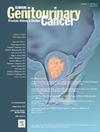Adverse Health Outcomes 3 Years after Radical Prostatectomy Compared with Men in the General Population: A Study from the Cancer Registry of Norway
IF 2.3
3区 医学
Q3 ONCOLOGY
引用次数: 0
Abstract
Introduction
Studies about adverse health outcomes (AHOs) after radical prostatectomy (RP) in population-based contemporary prostate cancer (PCa) patients are limited, as well as knowledge about corresponding data from age-similar men from the general population (Norms). We compared selected AHOs (pad use, intercourse inability), related problems (bother) and quality of life (QoL) between PCa patients and Norms.
Patients and methods
The Cancer Registry of Norway (CRN) provided data on PCa patients diagnosed in 2017-2019 and treated with RP who completed the EPIC-26 and EORTC-QLQ-C30 questionnaires 24-48 months after surgery (n = 1501). The CRN also established a group of Norms (n = 1894). Dichotomized EPIC-26 outcomes: daily use of ≥1 pad (Item#3), quality of erections (Item#9) and related bother (Item#4a/#12). EORTC-QLQ-C30: quality of life (Item#30). Multivariable logistic regressions explored associations between selected covariates and outcomes.
Results
In total, 41% of the patients and 5% in Norms reported pad use, the comparable figures for intercourse inability being 84% (Patients) and 48% (Norms). Among pad users, 24% of the patients and 25% of the Norms described bother. 52% of patients and 35% Norms with intercourse inability. Only bilateral nerve-sparing surgery (NSS) significantly reduced the risk of pad use and intercourse inability. Compared to Norms, PCa patients were associated with pad use, intercourse inability, related bother, and good/ fair QoL.
Conclusion
In these population-based cohorts, 2 in 5 patients used pads 3 years after RP, compared to 1 in 20 Norms. Intercourse inability was reported by 4 of 5 patients compared to 1 of 2 Norms. PCa patients were associated with good/ fair QoL. Bilateral NSS significantly reduced the risk of AHOs, highlighting the importance of this approach. Function and bother are different dimensions of urinary and sexual AHOs and must be reported separately. The findings from this study should be considered when counselling patients before RP.
与普通人群中的男性相比,根治性前列腺切除术后 3 年的不良健康结果:挪威癌症登记处的一项研究
导言对当代前列腺癌(PCa)患者根治性前列腺切除术(RP)后的不良健康后果(AHOs)的研究以及对普通人群(Norms)中年龄相似男性的相应数据的了解都很有限。我们比较了PCa患者和普通人群的部分AHOs(护垫使用、性交无力)、相关问题(困扰)和生活质量(QoL)。患者和方法挪威癌症登记处(CRN)提供了2017-2019年确诊并接受RP治疗的PCa患者的数据,这些患者在术后24-48个月完成了EPIC-26和EORTC-QQLQ-C30问卷调查(n = 1501)。CRN 还建立了一组规范(n = 1894)。二分法 EPIC-26 结果:每天使用≥1 个护垫(项目编号#3)、勃起质量(项目编号#9)和相关困扰(项目编号#4a/#12)。EORTC-QLQ-C30:生活质量(项目编号 30)。多变量逻辑回归探讨了选定协变量与结果之间的关联。结果总共有 41% 的患者和 5% 的常模报告使用了护垫,性交无能的可比数字分别为 84%(患者)和 48%(常模)。在护垫使用者中,24% 的患者和 25% 的常模描述了困扰。52%的患者和 35% 的正常人表示无法性交。只有双侧神经保留手术(NSS)能明显降低使用尿垫和无法性交的风险。结论在这些基于人群的队列中,每 5 名患者中就有 2 人在 RP 术后 3 年使用护垫,而每 20 名正常人中就有 1 人。每 5 名患者中就有 4 人报告无法性交,而每 2 名正常人中就有 1 人报告无法性交。PCa 患者的生活质量良好/一般。双侧 NSS 大大降低了 AHOs 的风险,突出了这种方法的重要性。功能和困扰是泌尿系统和性功能障碍的不同方面,必须分别报告。在对患者进行 RP 术前咨询时,应考虑本研究的结果。
本文章由计算机程序翻译,如有差异,请以英文原文为准。
求助全文
约1分钟内获得全文
求助全文
来源期刊

Clinical genitourinary cancer
医学-泌尿学与肾脏学
CiteScore
5.20
自引率
6.20%
发文量
201
审稿时长
54 days
期刊介绍:
Clinical Genitourinary Cancer is a peer-reviewed journal that publishes original articles describing various aspects of clinical and translational research in genitourinary cancers. Clinical Genitourinary Cancer is devoted to articles on detection, diagnosis, prevention, and treatment of genitourinary cancers. The main emphasis is on recent scientific developments in all areas related to genitourinary malignancies. Specific areas of interest include clinical research and mechanistic approaches; drug sensitivity and resistance; gene and antisense therapy; pathology, markers, and prognostic indicators; chemoprevention strategies; multimodality therapy; and integration of various approaches.
 求助内容:
求助内容: 应助结果提醒方式:
应助结果提醒方式:


